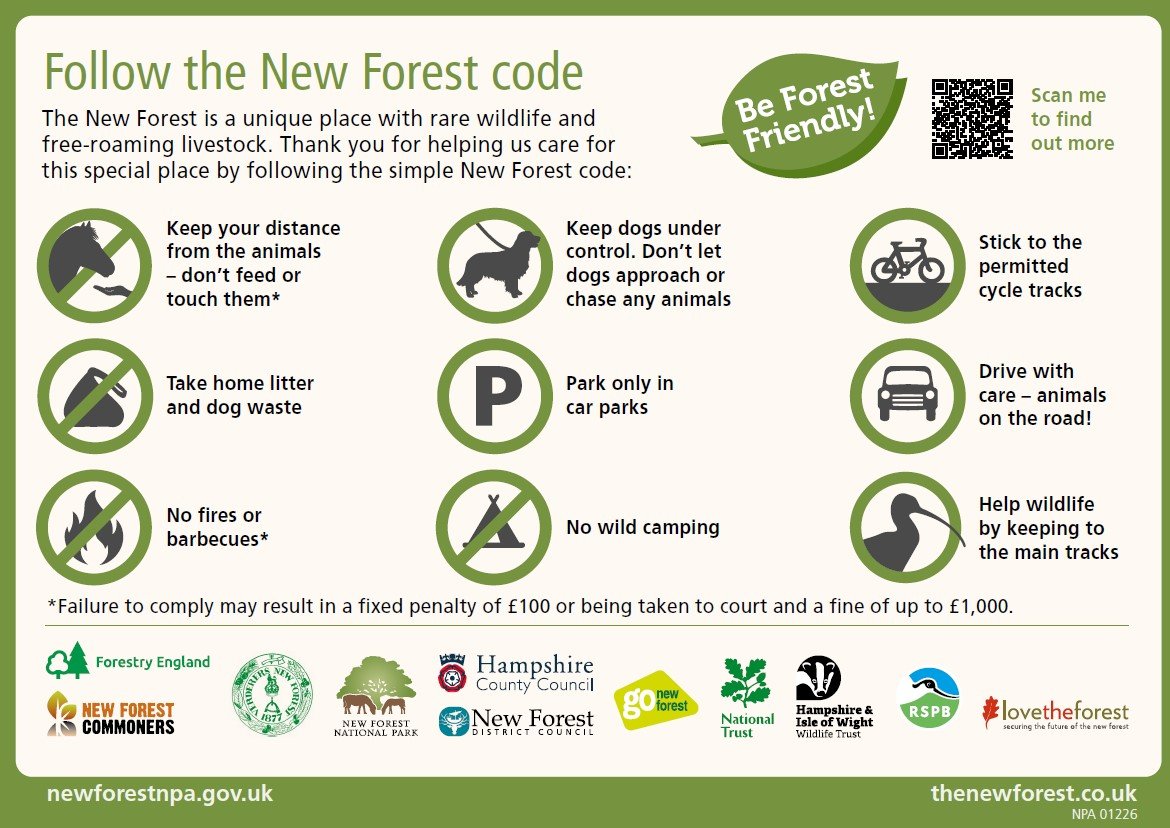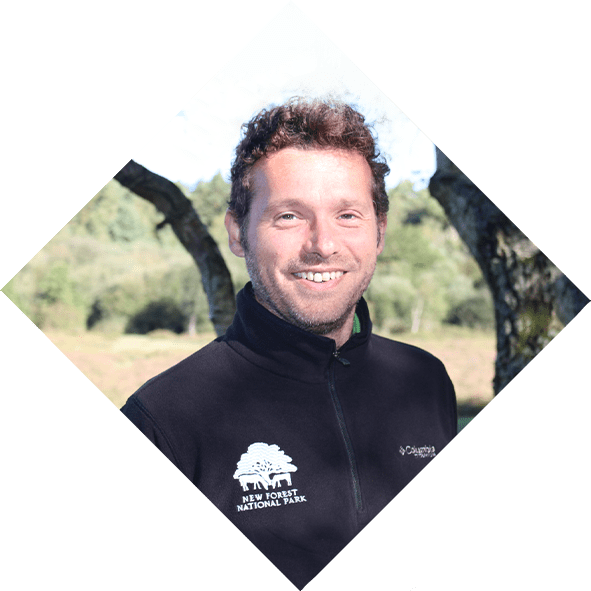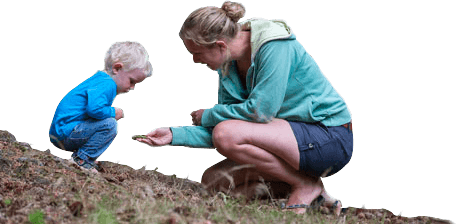Reptile Centre Discovery Trail
Start and finish at the Reptile Centre near Lyndhurst on this circular walk and children’s sensory trail
Discover more about British reptiles and amphibians and how they are being conserved in the New Forest. Specially created display enclosures allow you to study these animals in close-up. this includes the only collection of all the native lizards, snakes, frogs and toads, including Britain’s only venomous snake – the adder – and rarest lizard – the sand lizard.
In addition to reptiles and amphibians, the New Forest Reptile Centre is home to ‘A Date With Nature in the New Forest’ which affords an opportunity to see birds of prey in close up on nest cams.
Opening times of the Reptile Centre are seasonal. Please see the Forestry England website for up-to-date opening days and times.
This walk can be followed without a map, simply follow the red marker posts on the ground.
Overview
- Start/finish: New Forest Reptile Centre, grid ref: SU 270 071, postcode: SO43 7NH
- Ordnance Survey map: Explorer OL 22 New Forest
- Getting there: No public transport links, parking at Reptile Centre car park.
- Distance: 1.1 miles (1.8 km)
- Duration: Under 1 hour
- Local facilities: The Reptile Centre car park has plenty of room to accommodate visitors.
- Accessibility: Some of the trail is a grassy path that can become muddy during wet weather. Please note that part of this trail is on a cycle track.
Directions
1. Walk start and end point
This Forestry England trail is a waymarked walk. Just follow the waymarker posts to enjoy an easy to follow route for all.
2. Spruce trees
Sensory trail for children
Start your trail at the picnic area. You’ll see lots of spruce trees as you start the trail. They stay green all year. Their dark needle leaves are really spiky but the new shoots are bright green and soft. Rub some in your fingers – what do they smell like?
3. Tree stump
Sensory trail for children
Look at that big tree stump on the bank! Some of it has rotted down into soil with the help of minibeasts and plants are growing on it. How many plants can you count? Can you see the rabbit hole underneath?
4. Douglas Firs
Sensory trail for children
Most of these tall trees are called Douglas Fir and they’re really old. Did you know this kind of tree can live for hundreds of years? Can you reach right round one of the fir trees? How many people do you need? On a warm day and after rain the trees give off a wonderful scent that’s a bit like lemon and a bit like pine. Can you smell it?
5. Small trees and bracken
Sensory trail for children
There are small trees growing up between the big trees where sunlight reaches the ground. The wind blows the seeds off the trees to the ground where they grow. In spring and summer you’ll see bracken (a type of fern) here, too. It starts all curled up and uncurls as it grows, sometimes taller than you! Crouch down and jump up as high as you can to be as tall as the trees!
6. Minibeast hunt
Sensory trail for children
Trees are planted close together so they’ll grow up tall. Sometimes some of them are cut down to leave room and help the others to grow. The stumps and logs left behind make great homes for lots of creatures like woodlice, beetles, centipedes and ants. They recycle leaves and dead wood into new soil, and they’re food for bigger animals. Look for beetle holes in the logs… Can you see any minibeasts around here?
7. Pond
Sensory trail for children
At the pond look out for some beautiful dragonflies darting about on a sunny summer’s day. At other times if the water’s clear you might well see insects in the water, including dragonfly nymphs. Tadpoles swim about in spring, and later in the year, tiny frogs emerge from the pond. Try jumping about like a frog or holding out your arms and flying round the pond like a dragonfly.
8. Wobbly log
Sensory trail for children
Look out for a giant log. It must be very old! Do you think it could tell you stories about the forest and all the things that
have gone on here? Get up on the log and see how well you can balance! Get an adult to help, and be extra careful if the log is wet.
9. Old chestnut tree
Sensory trail for children
Look for the funny old chestnut tree on the left of the path. He has branches like arms and ‘eyes’ looking in all directions. He sees everything and can tell you all about what happens in the forest when people aren’t around. Put your ear to his trunk, ask a question, listen to his answers. What does he say?
Download our walking app
Our free walking app features points of interest and photographs.
New Forest code
Please be aware of the New Forest code when walking in the National Park.




